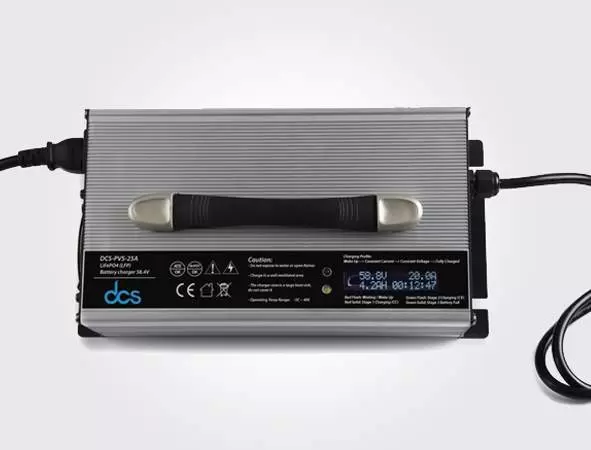If you are experiencing issues with the windows in your Holden Cruze, it could be a problem with the window regulator. The window regulator is an important component that allows you to raise and lower the windows in your vehicle. This blog post will discuss DIY tips for fixing a Holden Cruze window regulator to get your windows working properly again. Before you begin, ensure you have the right tools, including a screwdriver set, a panel removal tool, and a replacement window regulator. Additionally, working in a well-lit area and following safety precautions to avoid injury is important.
Understanding the Function of a Holden Cruze Driver Window Regulator
The window regulator in a Holden Cruze is a crucial component for controlling the movement of the driver’s side window. It operates the mechanism that raises and lowers the window glass, ensuring smooth and reliable window function.
Types of Window Regulators
There are two main types of window regulators: manual and power. The Holden Cruze uses a power window regulator, which uses an electric motor to operate the window. This system is more convenient than manual regulators, allowing the driver to control the window with a button rather than a hand crank.
Components and Operation
The Holden Cruze Drivers Window Regulator has several key components, including the electric motor, regulator assembly, and window lift mechanism. The electric motor is activated when the driver presses the window control switch. This motor turns a set of gears and pulleys that move the regulator assembly, which raises or lowers the window glass.
Common Issues and Maintenance
Common problems with window regulators include electrical failures, mechanical wear, and misalignment. Symptoms of issues may consist of slow-moving windows, grinding noises, or windows that don’t move. Regular maintenance, such as checking for debris and lubricating moving parts, can help extend the life of the window regulator. If problems persist, professional inspection and repair may be necessary.
Common Symptoms of a Faulty Window Regulator in Holden Cruze
Detecting a malfunction in your Holden window regulator is critical to ensuring the continued convenience and safety of operating your vehicle’s windows. Several tell-tale signs can alert you to a failing window regulator, each indicating that a closer inspection or a complete replacement may be necessary.
One of the first indicators might be the window moving without hesitation or moving simultaneously throughout its path. This inconsistent movement can signal that the regulator struggles to perform its function. Additionally, you may find that the window refuses to move, getting stuck in an open or closed position, which can be particularly concerning from a security and weather protection standpoint.
Another common symptom is the production of unusual noises when attempting to open or close the window. These sounds can range from grinding to clicking, suggesting that internal components within the regulator mechanism may be worn or damaged.
Lastly, a particularly alarming sign is when the window pane unexpectedly drops into the door cavity without being rolled down. This occurrence strongly suggests a significant failure within the regulator assembly, requiring immediate attention to avoid potential safety risks or further damage to the window system.
Each of these symptoms not only indicates a problem with the window regulator but also prompts vehicle owners to investigate further. Early detection and resolution of these issues can prevent more extensive and costly repairs and ensure the reliable operation of your Holden Cruze windows.
Replacing a Window Regulator
Replacing the window regulator in your Holden Cruze is a task that, with patience and the right tools, can be managed by most DIY enthusiasts. Ensure your vehicle’s ignition is off and the battery is disconnected to prevent accidental electrical shorts or shocks. You’ll want to carefully remove the door panel to gain access to the regulator; this usually involves unscrewing any visible screws and gently prying the panel away from the door frame with a suitable tool, being mindful of any electrical connectors for the window switches or door locks.
With the door panel removed, you’ll see the window regulator assembly clearly. Observe how it is mounted within the door and take note of the connection points for the window glass and the electrical power. Carefully detach the glass from the regulator, ensuring it remains supported and doesn’t drop. You may need a helper to hold the glass or securely tape it.
Unfasten the regulator from its mounting, disconnect any electrical plugs and remove the screws or bolts that hold it in position. With the old regulator removed, compare it to the new one to ensure compatibility before installing.
Fit the new regulator into place, securing it with the screws or bolts you previously removed. Reconnect the electrical supply and carefully reattach the window glass to the regulator mechanism, ensuring it’s properly aligned and secure. Before reassembling the door panel, conduct a test by reconnecting the battery and using the window controls to ensure the window operates smoothly and without obstruction. Once satisfied, reverse the disassembly steps to reattach the door panel, providing all screws are tight and electrical connections are reconnected.
Installing the New Holden Rodeo Fan Speed Resistor
If you’re experiencing issues with your Holden Rodeo’s fan speed, it might be time to replace the fan speed resistor. This component controls the fan motor’s speed, allowing for varying airflow levels. Here’s a step-by-step guide to help you install a new Holden Rodeo Fan Speed Resistor.
Step-by-Step Installation
Safety First:
Disconnect the vehicle’s battery to avoid any electrical shocks or shorts. Ensure the engine is cool before proceeding.
Locate the Resistor:
The fan speed resistor is typically located near the blower motor. To access it, you may need to remove the glove box or other panels.
Remove the Old Resistor:
Unplug the electrical connector from the old resistor. Use a screwdriver to remove any screws or bolts securing it in place. Carefully pull out the old resistor.
Install the New Resistor:
Position the new resistor where the old one was removed. Secure it with screws or bolts and reconnect the electrical connector. Make sure it’s firmly in place.
Reassemble the Dashboard:
Put back any panels or the glove box you removed earlier. Ensure everything is reattached properly.
Reconnect the Battery and Test:
Reconnect the vehicle’s battery. Start the engine and test the fan at different speeds to confirm that the new resistor works correctly.
Testing the Window Regulator
A systematic approach is essential when diagnosing issues with a vehicle’s window regulator. Here’s how to test it effectively.
1. Check the Basics
Before diving into technical aspects, ensure the car battery is fully charged. A weak battery can cause the window regulator to function erratically. Also, verify that the window lock switch is off and that there are no obstructions in the window’s path.
2. Inspect the Power Supply
Using a multimeter, check the voltage at the window switch. When pressing the switch in either direction, the multimeter should show voltage. If there’s no change, the switch may be faulty. Additionally, check the fuse related to the window system to rule out any electrical issues.
3. Test the Motor Function
If the switch functions correctly, listen for any sounds when operating the window. A working motor should produce a noise indicating it’s trying to move the window. If there’s no sound, the motor might be defective. You can bypass the switch and apply power directly to the motor terminals for further confirmation.
4. Examine the Regulator Mechanism
Remove the door panel to inspect the regulator assembly. Check for any signs of mechanical failure, such as broken cables or bent tracks. Manually move the regulator to ensure it operates smoothly. The regulator might need replacement if you notice any resistance or unusual noises.
5. Reassemble and Test
Once the tests are complete and necessary repairs are made, reassemble the door panel and test the window function to ensure everything works correctly.
Maintenance Tips to Prolong the Life of Your Holden Colorado Fan Speed Resistor
One key step in extending the life of your Holden fan speed resistor is to conduct regular inspections. Check the resistor for signs of wear, corrosion, or damage, especially if you notice irregularities in the fan speed. Look for loose connections or frayed wires that could cause malfunction.
Clean the Resistor and Surroundings
Dust and debris can accumulate around the Holden Colorado Fan Speed Resistor, affecting its performance. Periodically clean the area around the resistor to prevent buildup. Use a soft brush or compressed air to remove dirt without damaging the component. Keeping the area clean helps maintain proper airflow and reduces the risk of overheating.
Avoid Overloading the System
The fan speed resistor is designed to handle specific electrical loads. Overloading the system using high-intensity accessories or placing excessive strain on the fan can lead to premature failure of the resistor. Ensure your Colorado’s electrical system is well-maintained and avoid adding non-standard electrical components that could overload the system.
Address Electrical Issues Promptly
Electrical issues like short circuits or fluctuating voltage can negatively impact the fan speed resistor. If you notice any electrical problems, such as inconsistent fan speed or unusual noises, have your vehicle inspected by a professional. Promptly addressing these issues can prevent further damage to the resistor and other related components.
Professional Servicing
For best results, have your Holden Colorado serviced by a qualified technician who can check the fan speed resistor as part of routine maintenance. Regular professional check-ups can help identify potential problems before they become serious, ensuring the longevity of your fan speed resistor and overall vehicle performance.
Conclusion
Embarking on the journey of repairing or replacing a Holden Cruze window regulator is a rewarding endeavour that enhances your vehicle’s functionality and instils a sense of accomplishment. The guidelines in this guide aim to demystify the process, breaking it down into manageable steps that even those new to DIY automotive repairs can follow confidently. Equipped with the proper tools, a careful approach, and an understanding of your vehicle’s mechanics, addressing issues with your Holden window regulator can be an empowering experience.
FAQS
Q: What signs indicate a malfunctioning Holden Cruze window regulator?
A: Symptoms of a malfunctioning Holden Cruze window regulator include difficulty moving the window, the window sticking in one position, unusual noises like grinding or clicking when trying to open or close the window, or the window pane falling into the door panel unexpectedly.
Q: Is it feasible for me to replace the window regulator on my own?
A: with some mechanical aptitude, patience, and the correct tools, many individuals successfully tackle the replacement of a window regulator on their Holden Cruze. It’s important to follow the vehicle manufacturer’s guidance carefully and adhere to all safety protocols to ensure a successful repair.
Q: What maintenance practices can extend the life of my Holden window regulator?
A: Regularly cleaning the window tracks to remove dirt and debris can significantly prevent unnecessary strain on the regulator. Applying a silicone-based lubricant can also facilitate smoother operation and reduce wear. Additionally, inspecting the regulator and surrounding components for signs of rust or wear and addressing these early can prevent major failures.
Q: How can I test the functionality of a newly installed window regulator to ensure it’s working correctly?
A: After installation, reconnect the vehicle’s power supply and use the window switch to roll the window up and down several times. Watch for smooth, uninterrupted movement and listen for any unusual sounds. Double-check your installation for any issues if the window moves off-track or makes grinding noises.




